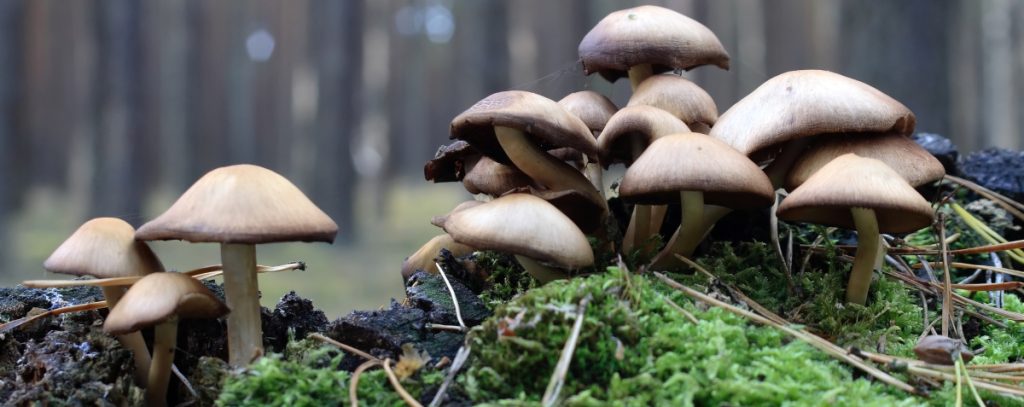Mushrooms are unique in that they’re the only fungi that people regularly consume. They’re known for their delicious culinary applications and range of medicinal uses.
But, although they’re growing in popularity, with more varieties available in local stores, many people know very little about them and where they come from.
In this article, you’ll learn where mushrooms come from and find answers to frequently asked questions about the origins of mushrooms.
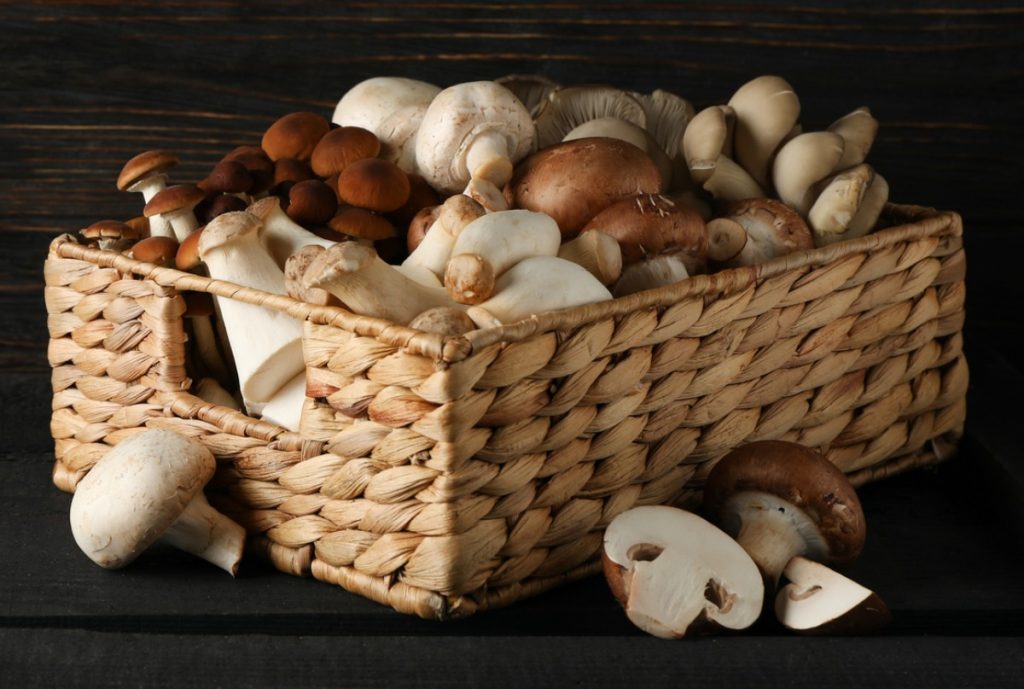
Where do Mushrooms Come From?
A mushroom is the fruit, or fruiting body, of a much larger fungus that’s usually hidden from sight underground or in decaying wood.
A complex network of fibers called mycelium makes up the hidden part of the fungus. and can spread over large distances underground.
Mycelium grows by absorbing nutrients from dead and decaying organic matter. It plays an important role in the ecosystem as it secretes enzymes that help to break down decaying organic matter.
It also provides an underground network that links fungi and allows trees to communicate with each other.
Mycelium is a remarkable organism whose goal is to reproduce and keep the species going. It can remain dormant and hidden for several years until conditions are right for reproduction.
Then it produces a fruiting body, which we call a mushroom, to produce and distribute spores.
Our article, “A Detailed Explanation of the Mushroom Life Cycle,” has more information that will help you better understand where mushrooms come from.

How do Mushrooms Grow Out of Nowhere?
It may sometimes seem like mushrooms have suddenly appeared out of nowhere as they can grow so quickly.
But, as you discovered above, they’re growing from underground mycelium that may have been around for some time.
In the wild, some species can grow from primordia, also called pins, to full-grown mushrooms in less than a day.
But, most medium to large mushroom species take three to four days to grow to their mature size.
Mushrooms grow so fast because they grow differently from plants and animals. Plants and animals use cell division to grow, which is a slow process that takes time and energy.
Mushrooms also use a process of cell division in the early stages of their development. But, by the time they’re small mushroom pins, they have all the cells they need for the mature mushroom.
They then flood these cells with water and nutrients, which enables them to expand and rapidly grow.
See our short time-lapse video where we discuss this.
Where do Mushrooms Originally Come From?
There is evidence that fungi first appeared about one billion years ago. And that humans have consumed mushrooms since ancient times.
In ancient Greece and Rome, people considered mushrooms to be the food of the gods, and ancient Egyptians reserved them for pharaohs.
For centuries people did not know how to cultivate mushrooms and only collected them in the wild.
Even today, we cultivate relatively few species of edible mushrooms when compared to the total number of edible species.
For thousands of years, China and Japan have used mushrooms for medicinal purposes. And, shiitake mushrooms were first cultivated by China around 800 years ago.
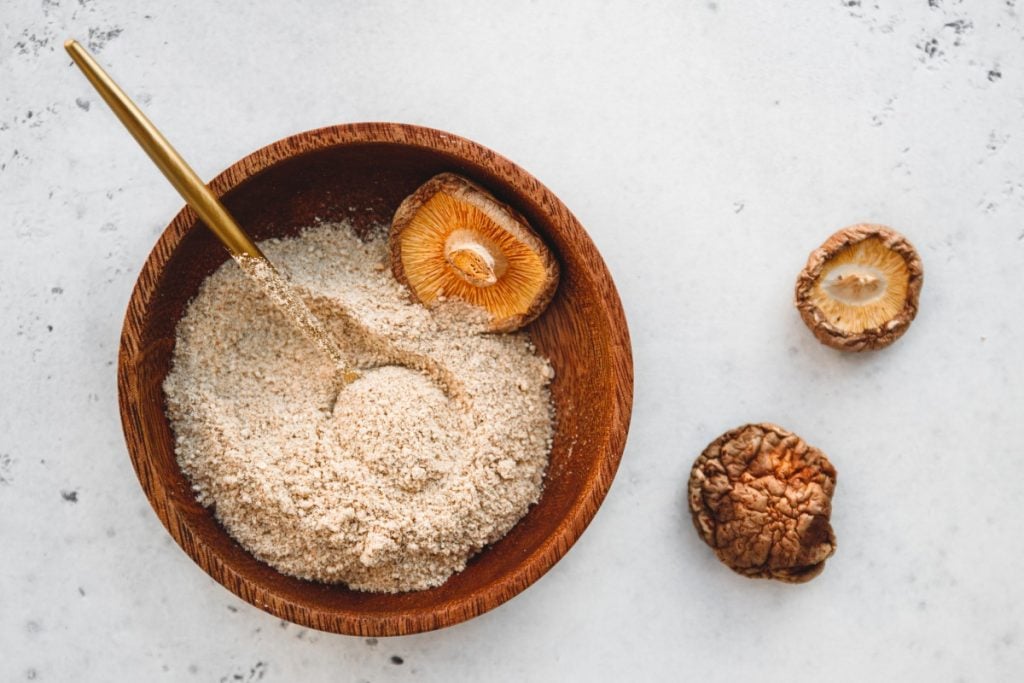
Where do Portobello Mushrooms Come From?
For most of us, portobello mushrooms come from our local grocery store. But, portobello mushrooms (Agaricus bisporus) also grow naturally in the wild.
You can find them in grasslands and meadows throughout Europe and North America.
Also known as champignon, button, white, brown or cremini mushrooms, Agaricus bisporus are the most cultivated mushrooms worldwide.
The first record of western cultures cultivating mushrooms was in France in around 1650. The first mushrooms they grew were Agricarus bisporus.
For 160 years, they grew button, cremini and portobello mushrooms in open fields using compost. Then they moved underground and began growing mushrooms in caves, quarries and excavated tunnels.
England was next to grow Agricarus bisporus, and in 1965 mushroom cultivation began in the United States.
Today button and portobello mushrooms are some of the most widely consumed mushrooms in the world. They make up more than 40% of global mushroom production.
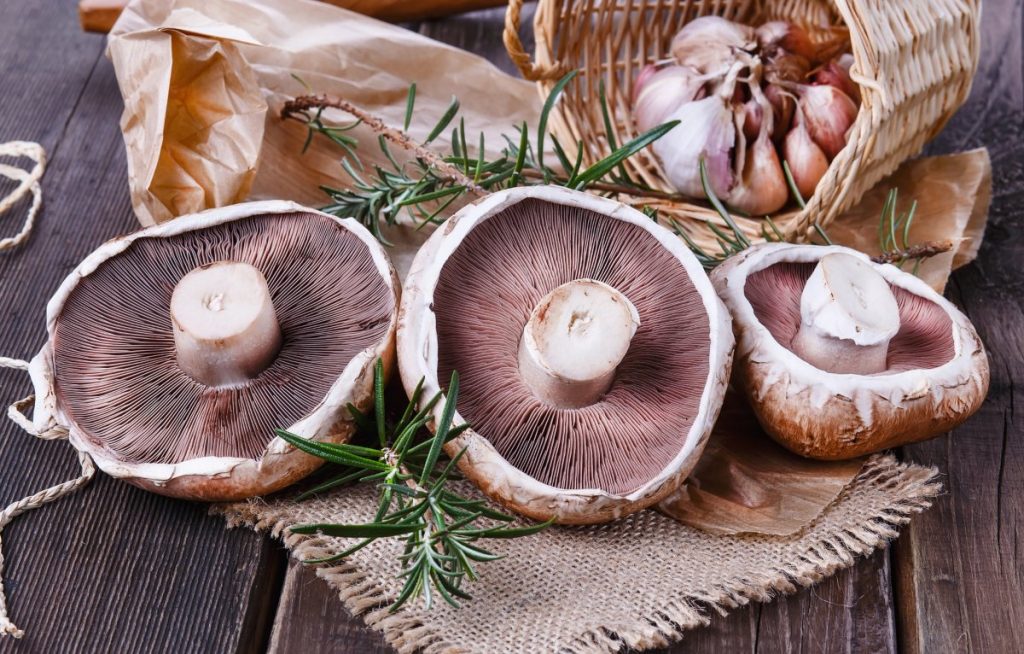
What Causes Mushrooms to Grow in Your House?
Mushrooms need specific growing conditions. So, if you see mushrooms popping up in your yard, environmental conditions have made it possible for the underground fungus to fruit.
For a fungus to thrive and produce mushrooms, they need the following conditions:
Indirect Light
Fungi don’t use sunlight for energy and only need indirect or shaded light for a few hours a day for fruiting bodies to form correctly. Too much direct sunlight could be harmful.
In the wild, you’ll find them growing in shady areas under trees. And, if you’re growing mushrooms indoors, indirect light from a fluorescent lamp or shady windowsill will provide enough light.
Moisture and Humidity
Mushrooms need a moist, humid environment to develop and grow.
They lose moisture easily as they have no skin and thus need high humidity in the environment around them to prevent them from drying out.
If mushroom pins dry out, they’ll stop growing.
Mushrooms also need a moist, but not wet, substrate to grow in as they breathe and exchange gases with the air around them. If the substrate is too wet, they’ll die.
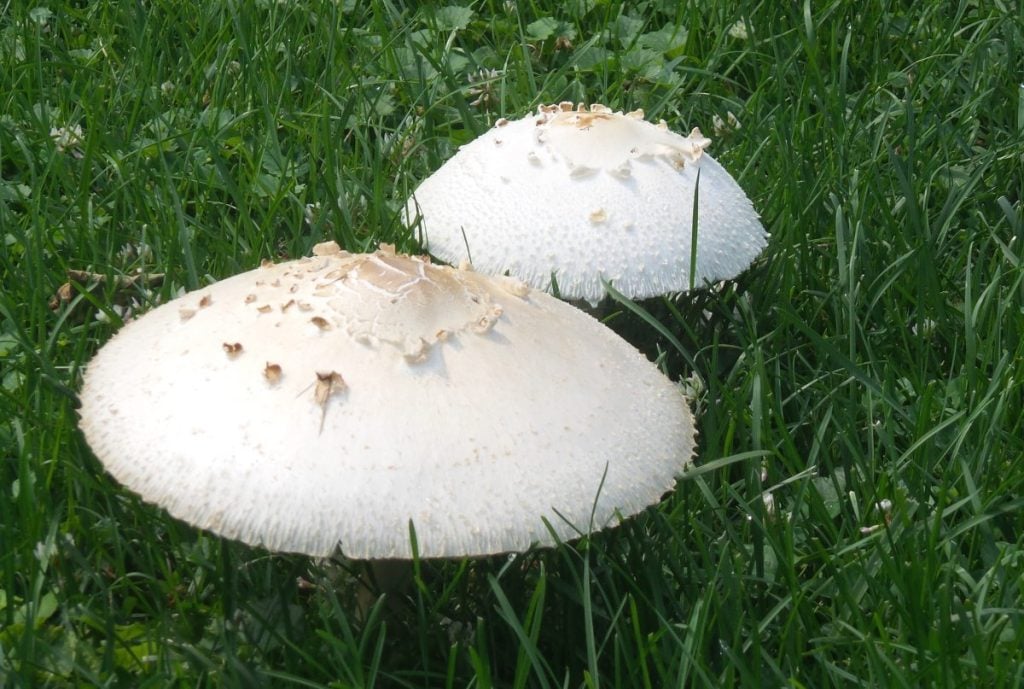
Cooler Temperatures
Mushrooms prefer cooler temperatures. This preference is the reason you’ll find many wild mushrooms growing in the fall and early winter.
The ideal temperature for fungi to form fruiting bodies varies depending on the type of mushroom.
But while mushrooms will grow best in their ideal range, most will fruit when temperatures are between 50-70F (10-21C).
Suitable Growing Medium
Mushrooms need a growing medium or substrate that the mushroom mycelium can use to grow and establish itself.
They may grow on dead trees or in animal dung, leaf mulch, soil or compost and feed off the dead and decaying organic matter in the growing medium.
Many wild mushrooms grow in leaf litter under trees, but their growing medium could also be the dead organic matter that’s already under the ground.
Different kinds of mushrooms prefer specific types of substrates. People commonly use compost, soil, wood chips, logs, sawdust, straw and coffee grounds to grow mushrooms.
Our article, “A Complete Guide to Mushroom Substrates,” has more information on the different substrates and which types of mushrooms prefer them.
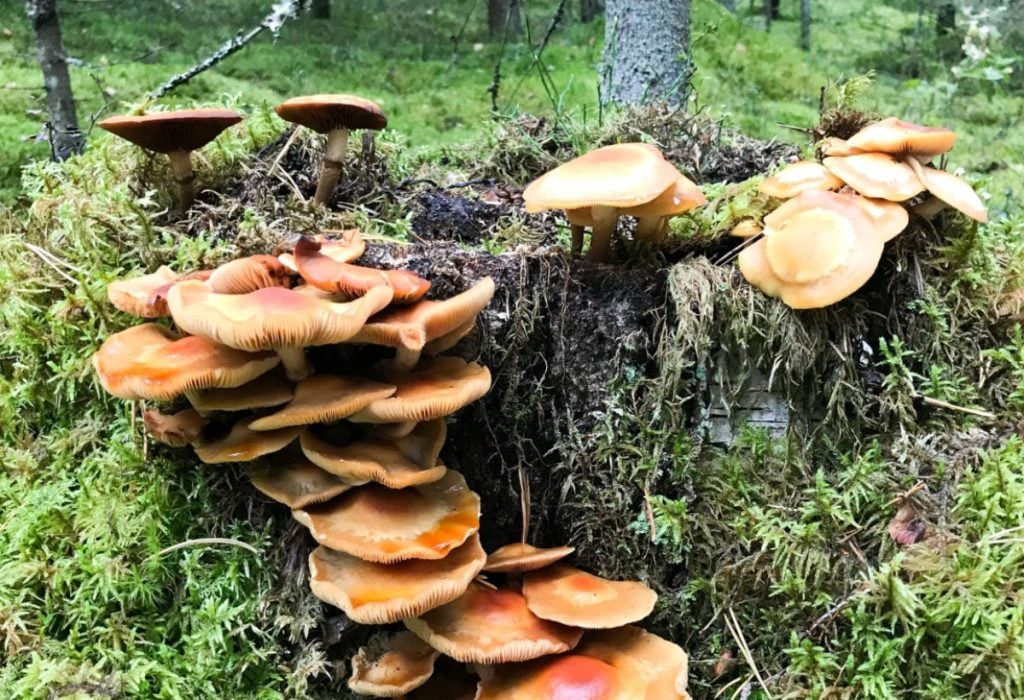
Do Mushrooms Grow in Dung?
Coprophilous fungi or dung-loving fungi are a type of fungi that like to grow in animal dung. Different species of coprophilous fungi prefer different types of herbivore dung.
And, if you’re wondering, “Do mushrooms grow in cow poop?” The answer is yes. Some types of mushrooms like to grow in cow poop, but they don’t only grow in cow dung.
But, cow dung in particular, makes an excellent growing medium for mushrooms because it contains very small amounts of stomach acid.
It’s also a good source of organic matter, enzymes and nutrients.
All types of herbivores consume thick-walled fungi spores while grazing and then excrete them along with the plant matter.
The spores then germinate and grow in the dung before fruiting and releasing their spores into the surrounding area.
In some countries, button mushrooms are grown on a substrate made up of straw and cow manure. Other countries use straw mixed with horse or chicken manure to grow button mushrooms.
Some well-known cow dung fungi are the hallucinogenic Psilocybe cubensis mushrooms.
These mushrooms grow anywhere that cattle have been grazing. And prefer to grow directly on cow dung that’s decomposing in a field.
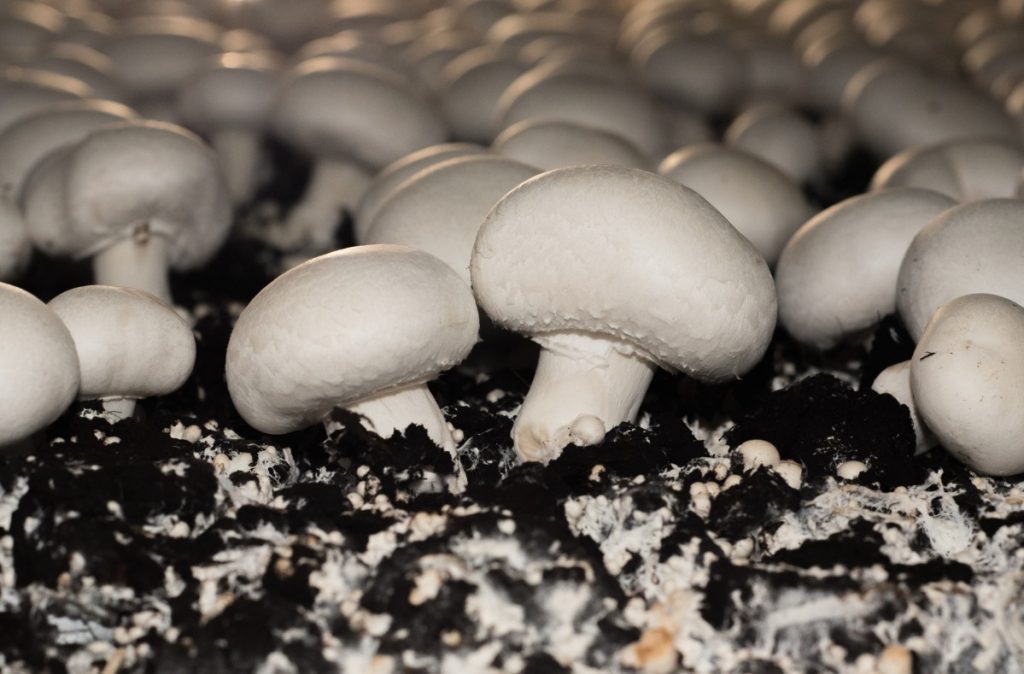
Where in The World do Mushrooms Grow?
Mushrooms occur naturally throughout the world. Depending on the climate and vegetation in the area, the wild mushrooms that grow vary.
Sampling exotic dishes made using local wild mushrooms is a culinary treat for mushroom-loving travelers. And many countries boast traditional mushroom dishes.
Edible, medicinal, and wild mushrooms are all part of the global mushroom industry. Currently, the commercial production of edible and medicinal mushrooms is increasing as these fungi gain popularity.
According to statistics in 2019, China was the world’s leading mushroom and truffle producer, followed by Japan, the United States, Poland and the Netherlands.
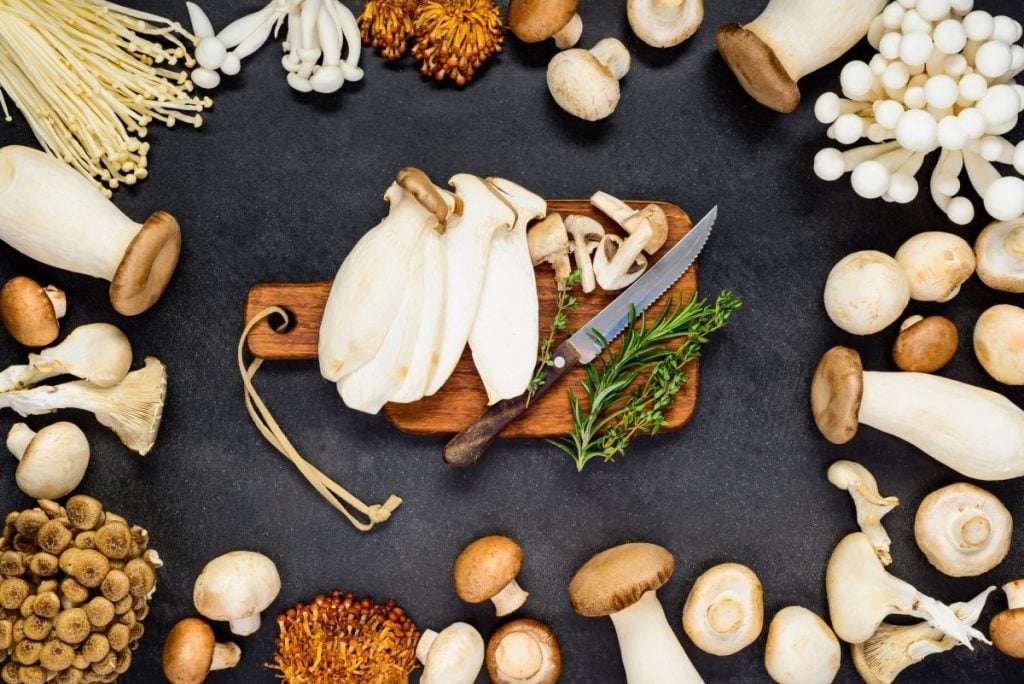
Final Thoughts
Since ancient times humans have consumed mushrooms and prized them for their culinary and medicinal uses.
The mushrooms that we enjoy for their delicious taste and health benefits are the fruiting bodies of a larger fungus that grows underground or on decaying logs.
Fungi need specific growing conditions to be able to form mushrooms and reproduce. But, it’s not difficult to recreate these conditions and grow delicious edible mushrooms at home.
Visit our Mushroom Growing Hub to learn more about growing mushrooms at home.
